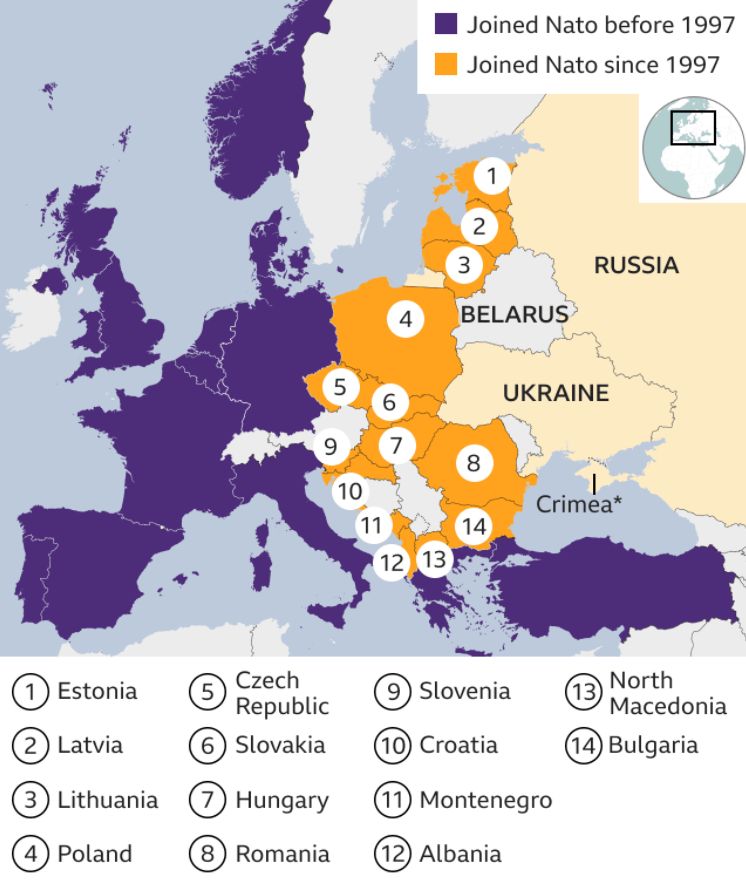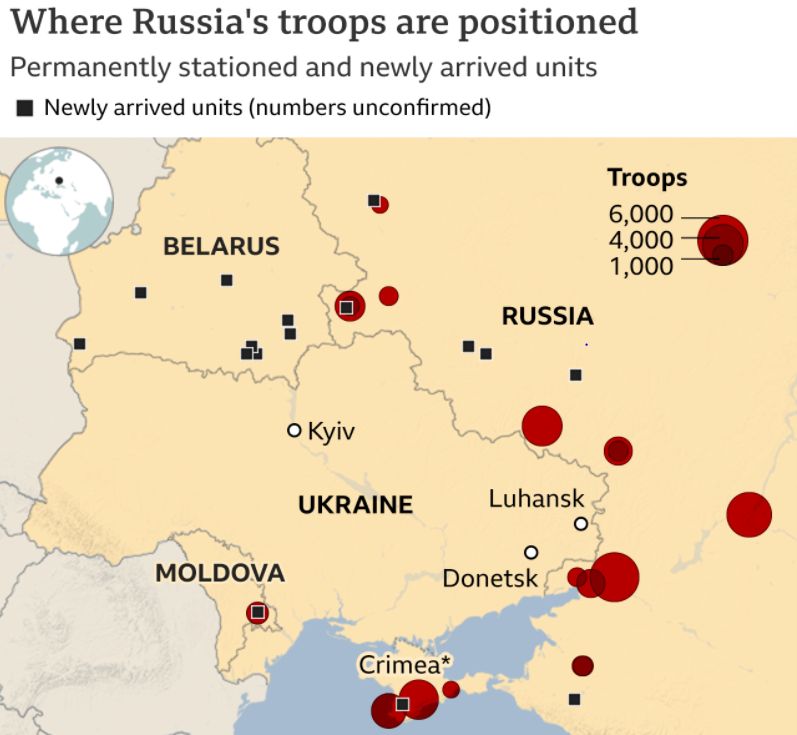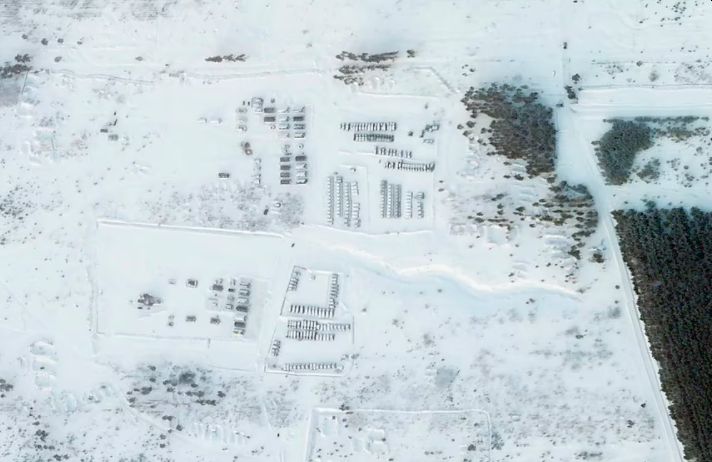By
Eric Vandenbroeck and co-workers
As pointed out in our 21 Jan. 2022 comment
the first crisis was brought about by the disintegration of the USSR,
a second crisis was Russia’s annexation of Crimea, and the ongoing
Russian-Ukrainian war and a third took place in 2020 when Russian
constitutional changes extended Putin’s term in office until 2026.
Blinken said when asked whether the formal response delivered to Moscow
includes any alteration to NATO’s open door
policy, which states that membership in the alliance is open to any
European country that is in a position to “contribute to the security of the
North Atlantic area.
The back-and-forth between Washington and Moscow represents the latest
attempt to defuse the
crisis, which was ignited in recent weeks as Russia amassed an estimated
100,000 troops on Ukraine’s border.
That path forward, Blinken said, did not include concessions on the
Kremlin’s primary demands, including the withdrawal of NATO troops from Eastern
Europe and the guarantee that Ukraine and other former Soviet-bloc countries
would be prohibited from joining the alliance. But he said the response from
Washington outlines areas for potential negotiation with Russia, such as arms
control and other reciprocal measures to increase transparency in the region.
“There is no change, there will be no change,” Blinken said. when asked
whether the formal response delivered to Moscow includes any alteration to
NATO’s.

NATO, the North Atlantic Treaty Organisation,
is a military alliance formed in 1949 by 12 countries, including the US,
Canada, the UK, and France. Members agree to come to one another's aid in the
event of an armed attack against any one member state.
Its aim was originally to counter the threat of post-war Russian expansion in
Europe. In 1955 Soviet Russia responded to Nato by creating its own military
alliance of Eastern European communist countries, called the Warsaw Pact.
Following the collapse of the Soviet Union in 1991, a number
of former Warsaw Pact countries became Nato members. The alliance now
has 30 members.
NATO already had troops in
eastern Europe before the most recent increase in tensions with Russia, but it
has boosted its presence there in recent weeks. According to NATO, there are
currently four multinational battalion-size battlegroups in Estonia, Latvia,
Lithuania, and Poland on a rotational basis. These battlegroups are led by the
UK, Canada, Germany, and the US. NATO said on Jan. 7 they are
"robust and combat-ready forces."

NATO has a response force that includes up to 40,000 troops from member
nations, including the United States. If all NATO members agree to deploy the
force it would be a big deal for the alliance, which could shore up defenses in
the Baltic states of Estonia, Latvia and Lithuania. Once a part of the Soviet
Union, they joined NATO in 2004.
Launching such a NATO deployment, however, would require consent from
all members, and there is reason to believe securing that could be difficult.
Germany, a longtime U.S. ally that obtains natural gas from Russia, is seen as
a potential holdout after Berlin declined to send lethal arms to help the
Ukrainian military. If Germany does not consent, the United States could deploy
troops independently to countries on Europe’s eastern flank that ask for
additional security.
the Pentagon, said the United States also could reposition some of the
more than 60,000 U.S. troops permanently stationed in Europe. About 200 Florida
National Guard members also are deployed in Ukraine to advise its military, but
they are west of Kyiv, far from the border with Russia. The Pentagon believes
they could be withdrawn quickly if required.
In the past, Ukraine has pressed for membership in NATO, which already
includes ex-Soviet countries like those in the Baltic region, but the
alliance has no plans
to add Ukraine soon.
Today Antony Blinken also noted that, in addition to the U.S.
response, NATO plans to deliver to Moscow its own paper outlining proposals and
concerns about collective security in Europe.
Blinken said he expects to discuss the next steps with Russian Foreign
Minister Sergey Lavrov in the coming days after the Kremlin has had a chance to
read the U.S. response.
“Right
now the document is with them and the ball is in their court,” Blinken
said.
Stepping up the diplomatic offensive, the United States called a public
meeting on Monday 31 January at the UN Security Council on Russia's threatening
behavior, hoping to bring condemnation even though Moscow can veto any
resolutions.
Meanwhile, satellite images reveal new units of Russian tanks around
100 miles from the Ukraine border, as the world waits to find out how Putin
will respond to letters dismissing his security demands.

For
updates click homepage here